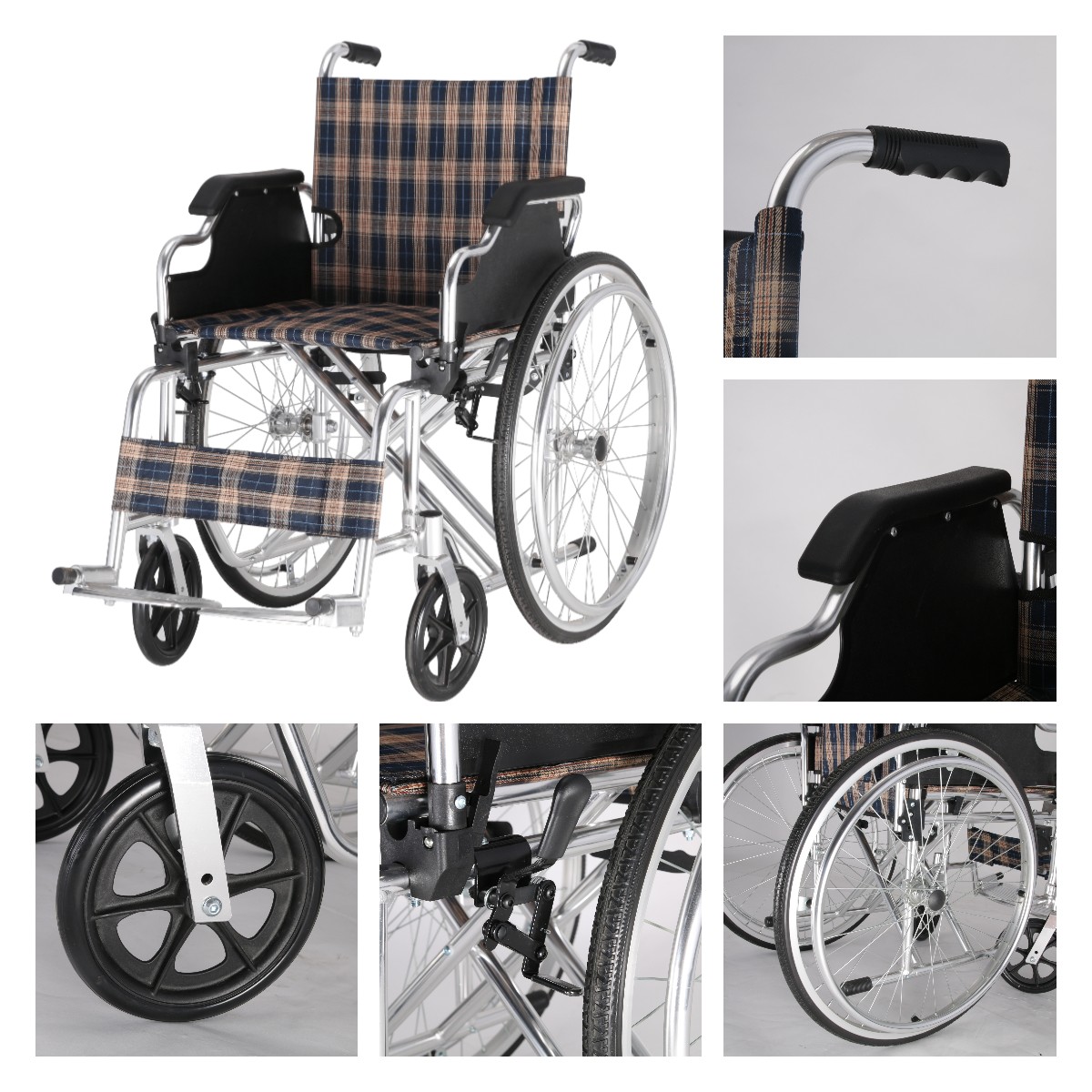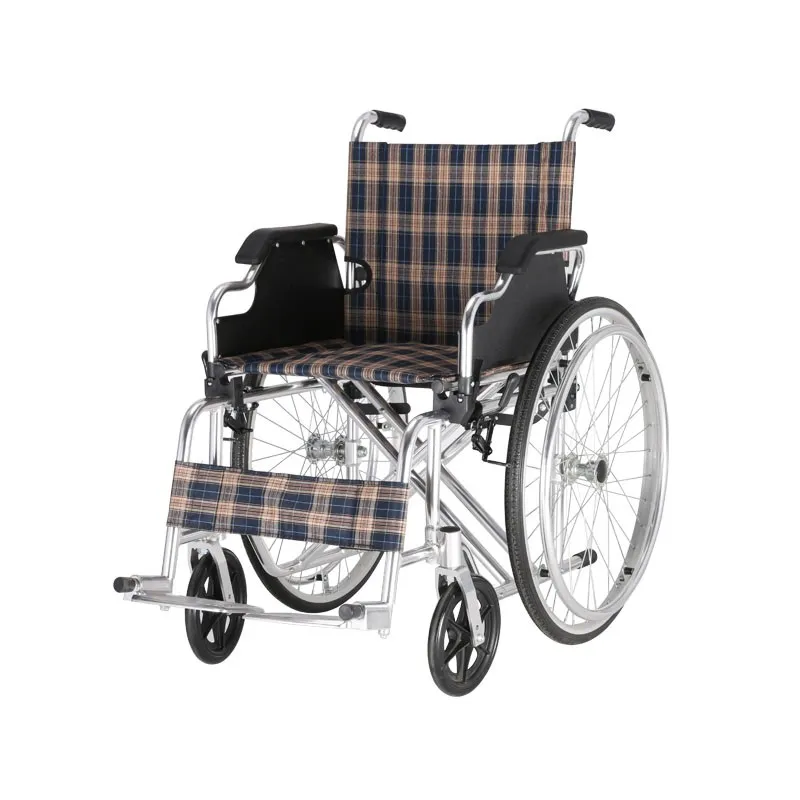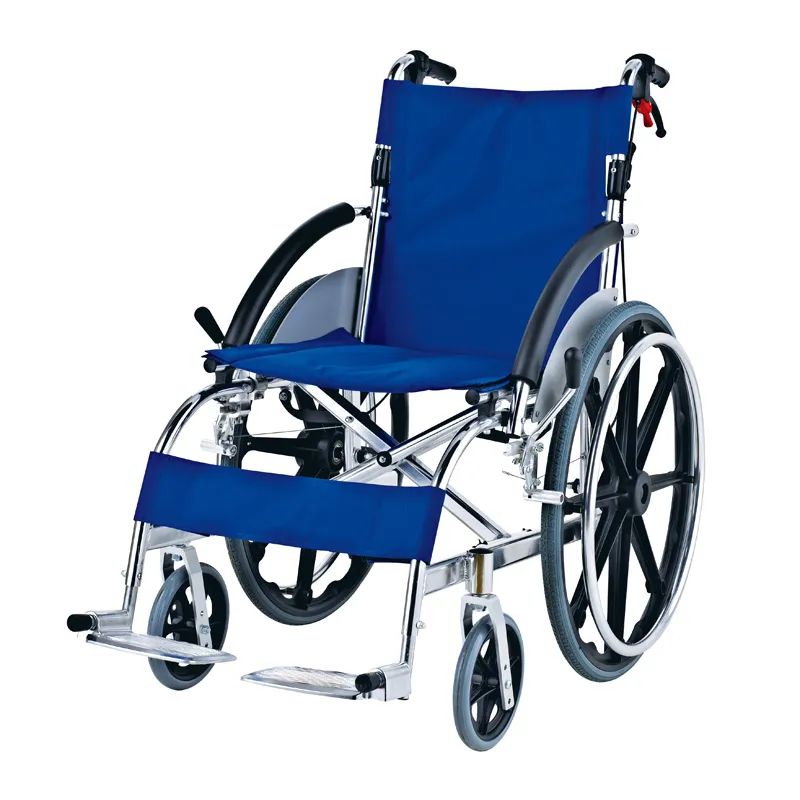Lightweight manual wheelchairs, due to their portability, ease of operation, and lightweight construction, are a popular choice for many elderly people, those recovering from illness, and those traveling for short distances. Compared to traditional steel manual wheelchairs, lightweight manual wheelchairs are designed with a focus on lightweightness and mobility, making them not only easier for the occupant to maneuver themselves but also easier for caregivers to push.
Many users ask similar questions after using them for a while: "Why does my lightweight manual wheelchair seem to be getting harder to push?" This phenomenon not only affects the user experience but may also indicate structural or functional issues.
This article will focus on this phenomenon, analyzing in depth the reasons why lightweight manual wheelchairs become difficult to push, the relevant construction principles, usage precautions, and key maintenance points, providing a professional perspective to address user concerns.

Lightweight Manual Wheelchair - Definition and Structure
1. What is a Lightweight Manual Wheelchair?
The lightweight manual wheelchair is designed with "lightweight, foldable, and portable" as its core design philosophy. It is typically made of materials such as aluminum alloy, titanium alloy, or carbon fiber, and generally weighs between 8 and 13 kilograms. Compared to traditional manual wheelchairs, it offers the following advantages:
· Easy to fold, making it suitable for travel;
· Lightweight and easy to operate, suitable for the user to push independently or with a caregiver;
· Compact and space-saving, making it suitable for urban families.
2. Structural Components
The core components of a lightweight manual wheelchair include:
· Frame (supporting framework): determines overall load-bearing capacity and stability;
· Large and small wheels: responsible for rolling and steering, with the axle as its core structure;
· Bearing system: connects the wheels to the frame, supporting rotational movement;
· Brake system: provides positioning and safe parking;
· Seat and back cushion: affects riding comfort;
· Armrests and footrests: help the user maintain balance.
It is this simple and sophisticated system that enables the lightweight manual wheelchair to achieve both lightness and excellent pushing performance.

Why does a lightweight manual wheelchair become "hard to push"?
Lightweight manual wheelchairs are designed to be lightweight and easy to push. Therefore, if a user notices that the wheelchair is becoming noticeably harder to push, it usually indicates a problem. Below, we analyze this issue from six key perspectives:
1. Tire aging or insufficient pressure
This is one of the most common causes. Lightweight manual wheelchairs typically use solid rubber or pneumatic tires. After long-term use, these problems may occur:
· Severe tread wear, increasing rolling resistance;
· Pneumatic tires sag due to insufficient pressure, increasing the ground contact area and reducing rolling efficiency;
· Loose tire beads, affecting the fit between the tire and the rim.
Professional Advice:
Check tire pressure monthly (recommended value: 40-60 PSI). Users with solid tires should inspect the tread for flatness, cracks, or peeling.
2. Bearing Wear or Poor Lubrication
The lightweight manual wheelchair's rolling motion relies on a high-quality bearing system. If the bearings:
· The lubricant dries out;
· Contains dust or impurities;
· The ball bearings become stuck or make unusual noises;
· The wheelchair will roll poorly, making it difficult to push.
Professional Advice:
It is recommended to clean and lubricate the wheelchair bearings every 3-6 months, using a dedicated bearing lubricant. Avoid disassembly or assembly by unprofessional personnel.
3. Wheel Axle Bend or Misalignment
Prolonged, high-pressure use, collisions, or a user approaching the maximum weight limit can cause the wheel axle to:
· Microbend;
· Misalignment with the bearing center;
· Slight misalignment and vibration during rolling.
These problems can cause the wheel to "bite" or rotate unbalanced, making pushing feel heavy.
Professional Advice:
Observe whether the large wheels are rolling straight. If misalignment is present, contact a professional for correction or wheel axle replacement.
4. Brake system partially locked or too tight
Lightweight manual wheelchairs often use a manual lock mechanism. If the brake pads:
· Overtightened;
· Spring failure prevents full return;
· Foreign objects are stuck in the brake mechanism;
·This can cause slight traction in the tires during rolling, increasing the thrust required.
Professional advice:
Check that the brakes are fully released. Manually move the tires to determine if there is any excess resistance. If the brakes are too tight, adjust the tension.
5. Frame deformation or structural looseness
Lightweight manual wheelchairs are made of lightweight materials and have a relatively flexible structure. If used in complex environments (such as frequent uphill and downhill driving, impacts, and bumps), the following may occur:
· Loose bolts;
· Slight bending of the center frame;
· Reduced lateral rigidity, causing the wheelchair to tilt.
These minor structural deformations can cause uneven tire wear and misalignment, affecting ride smoothness and handling.
Professional Advice:
Check key bolts for looseness every quarter, confirm the seat cushion is level, and ensure the tires are symmetrical. Contact the manufacturer for repair if necessary.
6. Exceeding the Recommended Weight
The standard weight capacity of a lightweight manual wheelchair is generally 100 kg. When the user's weight approaches or exceeds this value, this may cause:
· The seat may sag downward, shifting the center of gravity;
· Increased pressure on the front wheels, making steering difficult;
· Localized pressure and deformation of the vehicle structure.
Overloading not only makes the wheelchair difficult to push but also poses a safety risk.
Professional Advice:
The user or caregiver should be aware of the product's maximum weight capacity and strictly refrain from using it beyond the recommended weight limit. If the user's weight approaches or exceeds 100 kg, a heavy-duty manual wheelchair should be selected.

The Impact of Usage Habits on Pushing Performance
In addition to structural issues with the wheelchair itself, the user's operating habits can also affect the pushing experience of a lightweight manual wheelchair.
1. Improper Floor Material
Extended use on high-resistance surfaces such as rough tiles, gravel, or grass can lead to increased tire wear and pushing resistance.
· Recommendation: Choose a smooth, flat surface and avoid frequent sliding on slopes or obstacles.
2. Dust accumulation caused by long-term cleaning
If the axles, bearings, brakes, and other parts are not cleaned regularly, dust, hair, and debris may become lodged in the moving parts, causing poor rotation.
· Recommendation: Regularly clean the wheel joints with a soft brush or compressed air.
How can I properly maintain a lightweight manual wheelchair to ensure smooth rolling?
The lifespan and rolling performance of a lightweight manual wheelchair depend heavily on regular maintenance. Here are some professional maintenance recommendations:
1. Weekly Inspection:
· Check for bulges and cracks in the tires;
· Check the braking system for flexibility;
· Check for significant rolling deviation.
2. Monthly Maintenance:
· Clean dust from the axles and bearings;
· Lightly spray moving parts with silicone-based lubricant;
· Check the tightness of the bolts.
3. Quarterly Maintenance:
· Completely disassemble and inspect the axle system;
· Readjust the braking distance;
· Check the frame for straightness and center of gravity distribution.

Lightweight doesn't mean maintenance-free—regular maintenance is required
"Why is my lightweight manual wheelchair becoming difficult to roll?" This isn't just a sign of product aging; it could also indicate misuse or improper maintenance. We must understand the following:
A lightweight manual wheelchair's "lightness" doesn't guarantee maintenance-free or impact resistance; its compact design also means it requires more frequent maintenance.
Common causes of a lightweight manual wheelchair becoming difficult to roll include tire wear, bearing seizure, axle deformation, brake resistance, frame aging, and excessive weight.
How do you support procurement of manual & sports wheelchairs?
As a veteran manufacturer and supplier headquartered in Foshan, we produce a variety of manual and sports wheelchairs tailored to competitive, rehabilitation, and daily-use scenarios. With ISO and FDA/TUV quality controls, we offer durable frames, adjustable components, lightweight materials, and ergonomic designs.
Our capabilities allow for bulk orders, OEM/ODM customization, cost-effective quotes, wholesale discounts, and low-price promotions, all backed by CE certification and factory quality control.










